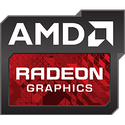
MSI Unveils AI-Driven Gaming Desktops with NVIDIA GeForce RTX 40 SUPER Series
MSI, a forefront leader in True Gaming hardware, proudly announces the incorporation of NVIDIA GeForce RTX 40 SUPER Series graphics cards into its latest 14th generation AI gaming desktops. The MEG Trident X2 14th, MPG Infinite X2 14th, MPG Trident AS 14th, MAG Infinite S3 14th, and MAG Codex 6 14th, initially featuring the NVIDIA GeForce RTX 40 Series graphics cards, now boast the cutting-edge RTX 40 SUPER Series, ushering in a new era of gaming excellence.
At the heart of these 14th gen AI gaming desktops lies the revolutionary RTX 40 SUPER Series, which are GeForce RTX 4080 SUPER, GeForce RTX 4070 Ti SUPER, and GeForce RTX 4070 SUPER. This series reshapes the gaming experience with cutting-edge AI capabilities, surpassing the speed of their predecessors. Equipped with RTX platform superpowers, these GPUs elevate the performance of games, applications, and AI tasks, marking a significant advancement in the gaming landscape.
At the heart of these 14th gen AI gaming desktops lies the revolutionary RTX 40 SUPER Series, which are GeForce RTX 4080 SUPER, GeForce RTX 4070 Ti SUPER, and GeForce RTX 4070 SUPER. This series reshapes the gaming experience with cutting-edge AI capabilities, surpassing the speed of their predecessors. Equipped with RTX platform superpowers, these GPUs elevate the performance of games, applications, and AI tasks, marking a significant advancement in the gaming landscape.



















































































